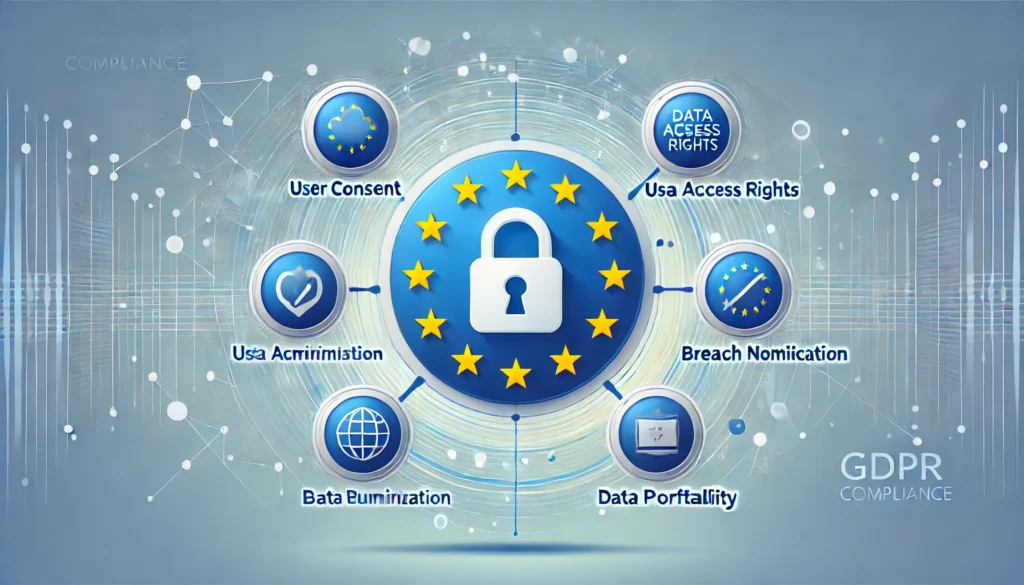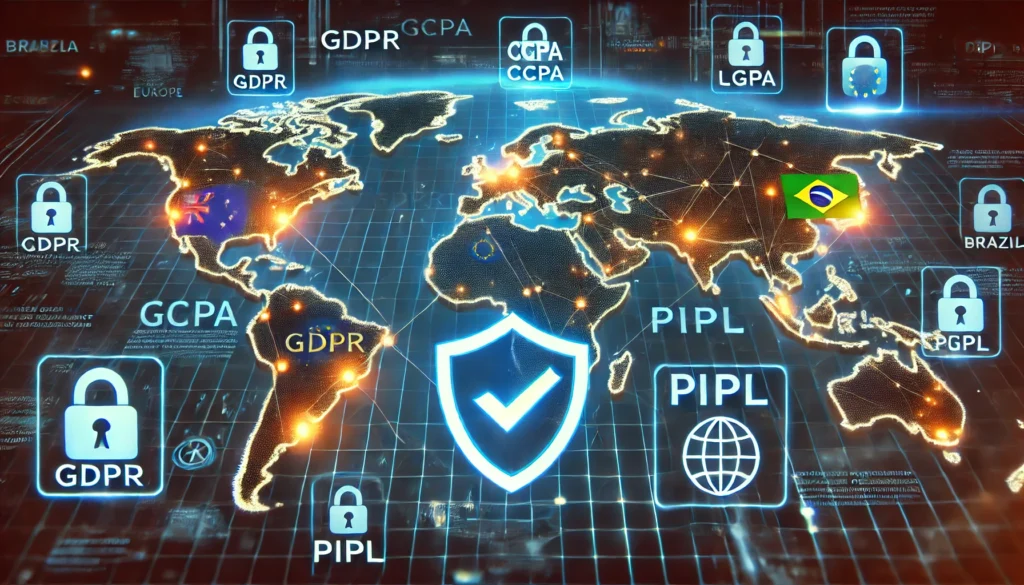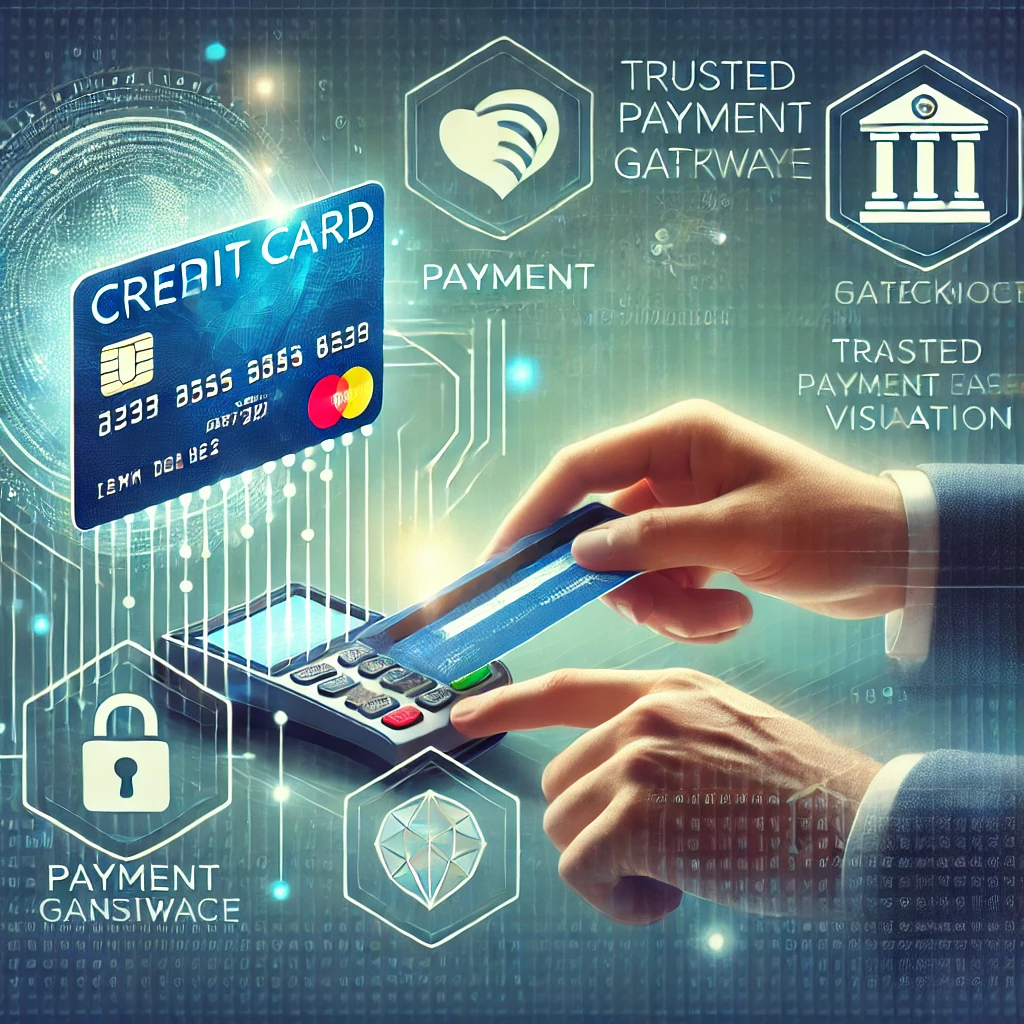Understanding and complying with privacy regulations has become a cornerstone of successful online business operations. The European Union’s General Data Protection Regulation (GDPR) triggered a global shift in how organizations handle personal data, demanding transparent practices, accountability, and robust security measures. Although GDPR primarily targets EU citizens’ data, its influence extends far beyond European borders. Companies worldwide must now address user consent, data portability, breach notifications, and user rights more carefully than ever.
Yet, GDPR is only one piece of a rapidly evolving privacy landscape. The California Consumer Privacy Act (CCPA) in the United States and similar laws in other regions echo GDPR’s emphasis on safeguarding user data. E-commerce websites, social networks, and online platforms large and small are all grappling with the intricate web of regulations that aim to uphold consumer trust. The challenge is to remain compliant in the face of shifting legal requirements, while also maintaining a frictionless user experience. Achieving this balance is crucial for brand reputation, customer loyalty, and ethical accountability. Today, we will dive into the essence of GDPR and other major privacy regulations, explain what it means to stay compliant, and offer insights into how you can fortify your website against data breaches and privacy infractions. By understanding these regulations, employing best practices, and teaming up with a reliable partner like Vadimages web development studio, you can protect your users while enhancing your credibility in the marketplace.
Understanding GDPR and Worldwide Privacy Regulations

GDPR was enacted in 2018 to address growing concerns about how businesses collect, store, and share user data. Although it specifically applies to personal data of EU residents, its scope is global. Any entity offering goods or services to EU users, or monitoring their online behavior, must adhere to these rules regardless of physical location. One key requirement is obtaining explicit consent for data processing, which means businesses must clearly communicate their intentions and secure a user’s affirmative agreement before capturing personal information. Another essential aspect is granting data subjects the right to access, correct, and erase their data, thus demanding efficient data storage, retrieval, and deletion mechanisms on the part of businesses.
Meanwhile, outside the EU, regulatory frameworks such as the California Consumer Privacy Act (CCPA) and Brazil’s Lei Geral de Proteção de Dados (LGPD) mirror many GDPR principles. They emphasize transparency, data minimization, and user autonomy. Even countries without formalized privacy statutes are discussing or drafting their own legislation, indicating that privacy is no longer an optional consideration. Companies that fail to align with these worldwide regulations risk fines, lawsuits, and the loss of consumer trust. The moral and ethical obligation to handle user data responsibly has never been stronger.
In practical terms, GDPR compliance demands a thorough review of your data collection points, whether they come from contact forms, e-commerce checkout pages, newsletter sign-ups, or third-party integrations. Organizations need to think about the entire data lifecycle: from the moment data is gathered, to how it is processed, stored, and eventually removed from company systems. For many businesses, meeting these guidelines necessitates adopting new technologies or redesigning core systems to accommodate user rights and data security. While this may seem daunting, the long-term benefits of fostering trust and remaining on the right side of the law far outweigh the challenges.
Implementing Effective Data Protection Strategies

When aiming to stay compliant with GDPR and other privacy regulations, you should begin by auditing your website and applications to pinpoint where and how personal data is collected. This process can reveal hidden vulnerabilities, such as outdated scripts, insufficient encryption, or insecure third-party services. Once you have mapped out your data flows, the next step involves upgrading security mechanisms to conform to minimum encryption standards, employing SSL certificates to protect data in transit, and ensuring robust database security for data at rest. Many businesses also adopt a practice known as “data minimization,” which means only collecting the information that is absolutely necessary for delivering services, reducing the risk in case of a breach.
Another integral part of compliance is educating both your customers and your staff. Informing users about what data you collect and why you collect it fosters trust and transparency. For employees, proper training sessions, role-based access control, and a well-defined data management policy can significantly lower the chance of inadvertent data leaks or mishandling. Additionally, your team should familiarize themselves with the concepts of Data Protection Impact Assessments (DPIAs), which are often required when introducing new processing activities that pose a high risk to individual rights.
Privacy by design is another approach that can streamline your efforts. Rather than bolting on compliance measures at the end of your development cycle, it involves integrating privacy considerations right from the conceptual stage of product or feature creation. This can include building in robust consent mechanisms, anonymizing data when user identities are not essential, and using pseudonymization or encryption for sensitive fields. Such strategies not only align with GDPR’s spirit, they also decrease your exposure to the fallout from breaches by making compromised data less valuable to attackers.
Data breach response planning is a vital element as well. GDPR mandates that organizations notify authorities of certain data breaches within 72 hours of discovery, and sometimes they must also inform affected individuals. Having an incident response plan with designated roles and a clear communication channel can mitigate reputational damage and regulatory penalties. Testing this plan through simulations or “tabletop exercises” ensures your team knows exactly how to respond if an incident occurs.
Building trust with customers and regulators goes beyond simply meeting the bare legal requirements. Regular reviews of your privacy practices, timely updates to your data policies, and transparent documentation of how user data is processed all contribute to a safer, more dependable user experience. Over time, these practices can become an asset, demonstrating your commitment to user-centric design and ethical data management. Indeed, strong privacy standards can serve as a competitive differentiator in an increasingly privacy-aware market.
Navigating Global Regulations and Best Practices

While GDPR has become a synonym for privacy regulations, the global environment remains fragmented. The legal definition of personal data, the scope of consumer rights, and enforcement mechanisms vary from region to region. To stay ahead, consider adopting a comprehensive approach to compliance that merges the highest common denominators of major regulations. This could mean implementing consent frameworks that match GDPR’s stricter demands, thus automatically meeting or exceeding the requirements of less stringent laws.
Cross-border data transfers require special attention. The EU demands that any data moving outside its territory be protected with the same rigor applied within it. Mechanisms like Standard Contractual Clauses (SCCs) or recognized certification frameworks play a critical role in legitimizing these transfers. Meanwhile, other regions, such as China with its Personal Information Protection Law (PIPL), impose additional layers of complexity. Ensuring that your business aligns with these cross-border rules can be challenging, but it is crucial for maintaining a global presence without running afoul of local authorities.
Frequent policy updates and annual audits are a sensible way to confirm ongoing compliance. Internal audits should reevaluate data flows, check for any unauthorized or unexpected usage of personal information, and verify that third-party vendors continue to meet their obligations. Regulatory bodies can modify requirements or issue clarifications on existing rules, and companies that fail to keep pace risk non-compliance. It is also wise to keep a close eye on relevant legal developments and guidance from authorities. Sometimes, real-world enforcement actions or landmark court cases offer insights into potential pitfalls and best practices for compliance.
Investing in user-friendly consent management platforms can simplify the process of gathering and recording consents. Many such systems allow you to track granular preferences, such as marketing opt-ins or special category data, while automatically generating compliance logs. Beyond legal protection, offering users the freedom to select what they share with you fosters loyalty and reduces dissatisfaction. People appreciate knowing that their privacy choices are valued.
One often overlooked aspect is the regular training and upskilling of your data protection or compliance officers. While technology can handle encryption, access control, and record management, knowledge of evolving regulations and an eye for potential blind spots remain uniquely human tasks. A well-equipped internal team can spot red flags early and recommend policy adjustments before they escalate. Depending on the size of your organization, you may also need to assign a Data Protection Officer (DPO) who carries the responsibility for overseeing your data protection strategy and acts as the main point of contact for regulators.
The Future of Privacy and Partnering with Vadimages

Privacy regulation is a living, breathing entity. As technology advances, lawmakers continually refine their approach to protect individuals in an increasingly digital world. The Internet of Things, artificial intelligence, and big data analytics all introduce fresh privacy challenges. Users are becoming more aware of how businesses might leverage their personal data, leading to rising expectations of transparency and control. Companies that neglect these shifts risk falling behind, both legally and competitively.
Staying ahead in this domain requires a dependable and forward-thinking web development partner. Vadimages web development studio specializes in creating secure, compliant, and user-focused online solutions. Our team combines expert knowledge of privacy regulations with innovative design and cutting-edge development tools to produce websites and platforms that both excel in user experience and adhere to the highest data protection standards. Whether you are overhauling an existing site or planning a brand-new platform, Vadimages can seamlessly integrate strong privacy protections into every facet of your project.
We understand that regulatory landscapes differ across sectors and geographic locations. Our consultants stay informed about the latest legal developments and compliance best practices. At Vadimages, we work closely with our clients, auditing data practices, proposing improvements, and implementing processes that meet or exceed GDPR, CCPA, and other regulatory requirements. We strive to be more than just a development team; we aim to be your long-term privacy and compliance ally.
As part of our service, we can embed dynamic consent modules, design user-friendly privacy dashboards, and ensure your website infrastructure is optimized for rapid data retrieval or deletion upon user requests. Our approach is rooted in transparency and efficiency, so you can focus on growing your business while we handle the complexities of data protection. We view ourselves as partners in building trust, safeguarding reputations, and protecting user data in a digital world that remains ever-evolving.
Graphics can be a powerful medium to simplify the complexity of privacy compliance. To illustrate the user’s journey through data collection, storage, and eventual erasure, imagine a looped arrow chart where data enters at one point (collection), passes through a robust shield (encryption and security), and then loops around to the user’s domain (fulfilling access and erasure requests). These visual aids demonstrate the cyclical nature of data handling and the critical role transparency plays at each stage. This kind of diagram can be displayed on your compliance or privacy page to make your commitment to data protection more comprehensible to visitors.
With the right combination of knowledge, strategy, and professional support, fulfilling GDPR and other privacy obligations becomes more manageable. Instead of viewing compliance as a burden, reframing it as an opportunity can lead to stronger relationships with users who know their data is in good hands. When you choose Vadimages web development studio, you are aligning yourself with a partner that understands the pressing importance of data protection and privacy. We look forward to working alongside you, transforming complex regulations into seamless user experiences that foster trust and reliability in every interaction.
The future of online privacy is filled with promise, as new tools and evolving standards push businesses to handle data more ethically and responsibly. Organizations that stand out in this environment will be those that go beyond the letter of the law, treating compliance as an integral part of their brand ethos. By carefully evaluating your data flows, implementing robust security measures, and staying updated on global regulations, you can confidently navigate the privacy terrain. And by collaborating with Vadimages, you will have access to experts who can turn compliance hurdles into stepping stones toward lasting success.









